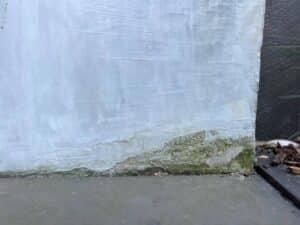Yes, it’s possible to minimise foundation movement on your property. Effective methods to prevent this issue include ensuring adequate drainage around the property, being cautious with the types of trees planted nearby, and promptly addressing any plumbing issues.
For businesses, commercial underpinning in Adelaide offers a robust solution, reinforcing the stability of a building’s foundation.
This blog will discuss more on preventing foundation movement and soil classifications in your area.
How Can I Prevent Foundation Movement?
You can prevent foundation movement by doing the following:
Install Proper Drainage
Ensuring your property has proper drainage is crucial in preventing foundation movement. Excess water can lead to soil expansion and contraction, which in turn affects the foundation. Installing gutters, downspouts, and proper grading is important to direct water away from the foundation.
Also, consider installing a drainage system around the perimeter of your home, especially if your area is prone to heavy rainfall.
Monitor Plant Growth
Planting trees and shrubs near your property can inadvertently impact the foundation. As roots grow, they can extract moisture from the soil, causing it to shrink and potentially leading to foundation movement. It’s vital to monitor and manage plant growth near the foundation.
Opt for plants with smaller, less invasive root systems, and keep larger trees at a safe distance from your home.
Fix Plumbing Issues
Plumbing issues, particularly leaks, can significantly contribute to foundation movement. Water from leaks can soften or erode the soil beneath the foundation, leading to instability. It’s essential to fix any plumbing issues promptly to avoid such problems.
Regular inspections of your plumbing system can help identify and address leaks early. This preventative approach not only protects your foundation but also helps in understanding if cracks on walls are a result of plumbing issues.

Choose a Strong Foundation
Selecting the right type of foundation is a fundamental step in preventing foundation movement. The choice depends on various factors like soil type, climate, and the structure of your building. Deeper and more robust foundations might be required for areas with expansive soils or extreme weather conditions.
Investing in a strong, well-designed foundation can save you from future problems and expenses.
What Are the Soil Classifications in My Area?
These are the soil classifications in Adelaide:
- A – Sites with sandy or rocky terrain exhibit minimal movement from moisture changes.
- S – Locations experiencing slight ground movement due to moisture change, with surface movement ranging from 0 to 20 mm.
- M – Areas with moderate ground movement due to moisture change, showing 20 to 40 mm of surface movement.
- H1 – Zones with a high rate of ground movement, experiencing 40 to 60 mm of surface movement.
- H2 – Sites facing a very high rate of ground movement, with movement between 60 and 75 mm.
- E – Regions subjected to an extreme rate of ground movement, exceeding 75 mm in surface movement.
- P – Areas with soft soils, filled sites, collapsing soils, and other problematic or unclassifiable sites.
Is It Normal For Footings to Move?
Yes, it is normal for footings to move within certain limits. Footings, the structural base that supports a building, are designed to accommodate some level of movement due to various factors like soil conditions and climate changes.
Wall cracks under 1mm are generally considered normal, reflecting standard foundation movement. However, when these cracks range between 1mm and 5mm, they warrant closer observation over all seasons for a year. This kind of movement can be a subtle foundation repair sign, indicating adjustments or monitoring may be necessary.
For properties over a decade old, consulting the original builder is a wise first step to understanding the context of the movement.
